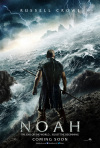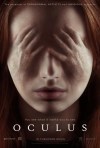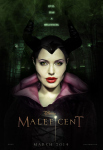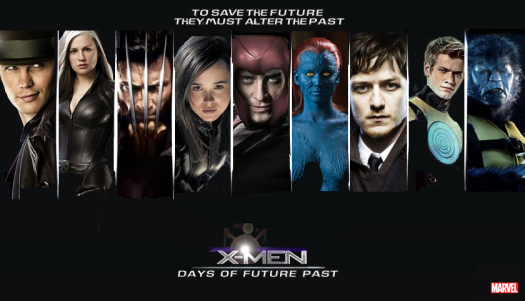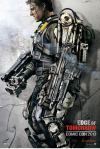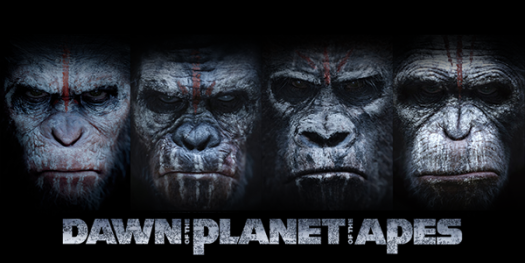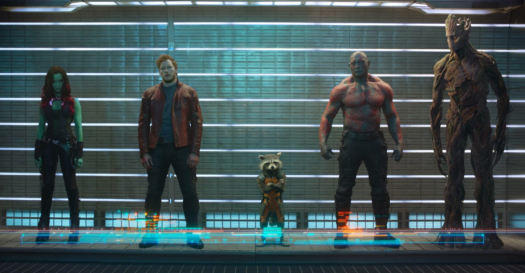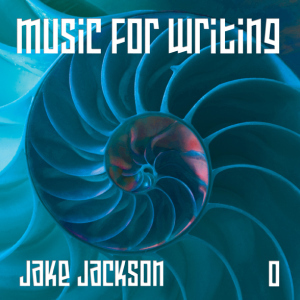Jake Jackson's Blog, page 25
February 5, 2014
2014: Top 10 SF and Fantasy Movies (well, almost 20!)
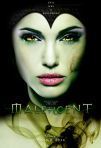 The sf and fantasy movies of 2013 certainly delivered at the box office, although nothing quite matched the highs of The Avengers in 2012. However, Iron Man 3, Wolverine, Star Trek Into Darkness and Thor, The Dark World brought some mighty entertainment to world still straining with the entrails of economic gloom. There were some turkeys too: After Earth and Oblivion, in Will Smith and Tom Cruise the big stars couldn’t guarantee big audiences, and Man of Steel, while it had some great moments, lacked of humour and humanity. Two really terrific movies in though were the second Hunger Games, Catching Fire and The Hobbit: The Desolation of Smaug, both significantly more effective than their predecessors, teasing out both emotional and narrative depth from potentially exhausted themes.
The sf and fantasy movies of 2013 certainly delivered at the box office, although nothing quite matched the highs of The Avengers in 2012. However, Iron Man 3, Wolverine, Star Trek Into Darkness and Thor, The Dark World brought some mighty entertainment to world still straining with the entrails of economic gloom. There were some turkeys too: After Earth and Oblivion, in Will Smith and Tom Cruise the big stars couldn’t guarantee big audiences, and Man of Steel, while it had some great moments, lacked of humour and humanity. Two really terrific movies in though were the second Hunger Games, Catching Fire and The Hobbit: The Desolation of Smaug, both significantly more effective than their predecessors, teasing out both emotional and narrative depth from potentially exhausted themes.
So, onto 2014, a fantastic mix of sf and fantasy, and a few more than the Top 10:
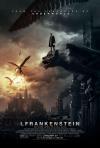 I, Frankenstein (January release)
I, Frankenstein (January release)
This feels like a shiny TV series with some fabulous FX, but I’m a sucker for Frankenstein and if Sherlock can be updated to 21st then so can the good Doctor. Based on a graphic novel of the same name this is set in a present day future where Adam (yes, that’s a new name of Dr Frankenstein’s creation) is caught in a war between demons and gargoyles (I know!). Gothic horror and Bill Nighy, it’s got to have something going for it!
I guess this is meant to be the next teen blockbuster, after Twilight and Hunger Games. It looks interesting and has gritty dystopian feel (there it is again) as our hero, Beatrice has some sort of special mind (yep, she’s Divergent) which makes her impervious to the authoritarian controls of the society that surrounds her. Rebellion, adversity, rugged landscapes, this has it all (!). It does need some great acting, which the trailer certainly hints at.
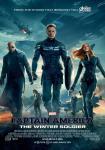 Captain America: The Winter Soldier (March release)
Captain America: The Winter Soldier (March release)
Chris Evans, Scarlett Johansson, Sam Jackson, Robert Redford, how can this fail? Well it won’t it’s going to be magnificent. I don’t like army films and I don’t like gun battles, and I really hate having someone else’s patriotism thrust in my face, but the first film worked because it focused on the qualities of the individual, a sort of wholesome everyman that we all hope hides in us all somewhere. I don’t care what this is about, the trailer is great (2nd one just released, below) and we’re going to see it!
 300: Rise of an Empire (March release)
300: Rise of an Empire (March release)
Based on a graphic novel by Frank Miller (oh yes!), a screenplay by Zack Snyder (Man of Steel), a follow-up from the grim brilliance of 300, with Eva Green (utterly brilliant in Dark Shadows) and a switch to the open sea this is powerful stuff. Based at that point in relatively ancient history when the Greek empire was beginning to resist the all-conquering Persians this promises a mix of astounding digital fx and dark mythology.
I ummed and ahed about this. Russel Crowe? Monosyllabic titan of mysogeny? Actually, he was probably born for this role, as long as we can forget his risible Robin Hood. Also stars Emma Watson (having survived Harry Potter intact she’s blooming into a terrific screen presence), and the ever reliable Anthony Hopkins, late of Odin (in Thor), now he’s Methuselah, a slight step down I suppose. This is portentous movie that revels in a defining moment in period of history. Gradiose and epic, it could be the movie event of the year.
Johnny Depp. Up to The Lone Ranger I would have said I’d watch any movie he was in. This sounds good though, A.I., consciousness and terrorism. Not sure what to make of it, but it’s intriguing. Morgan Freeman, as always, provides the usual gravitas.
 Under the Skin (April release)
Under the Skin (April release)
Scarlett Johansson plays an alien seductress who seeks out hitchhikers. I might regret including this, but I hope it has more mystery than salacious cliché; it’s an indie film, so worth supporting. Johnansson has a busy year, and is filming the next Avengers movie.
With its creepy, surreal movie poster and chilling trailer Oculus looks intriguing from the several months off release. Starring Karen Gillan, an engaging Doctor Who companion who guarantees a loyal fan base, in her first big movie role, it’s hard not to want this to succeed.
 Amazing Spiderman 2 (May release)
Amazing Spiderman 2 (May release)
The Rhino, Green Goblin and Jamie Foxx as Electro, this new take on the Spiderman franchise is moving into a higher gear. I’ll admit to some weary nostalgia on this but my daughter really likes Andrew Garfield, which is, ah, interesting.
Lana del Ray’s trippy ‘One Upon a Dream’ haunts the trailer of this spiky, powerful vehicle for Angelina Jolie as the ‘villain before she became a villain’, the witch queen of Sleeping Beauty. Somehow this reminds me of Jolie’s amazing performance as the monster’s mother, in Beowulf: a seductive, magisterial but tragically flawed character.
X-Men: Days of Future Past (May release)
Mark Millar (Marvel’s creative consultant for the the film) says, “You’ve got robots, you’ve got time travel, you’ve got superheroes – it’s got everything in one film.”
A follow-up to X-Men First Class, this is still a prequel to the first X-Men movie, and somehow manages to pack in almost every major star to have appeared in all the previous movies, from Jennifer Lawrence to Patrick Stewart, Hugh Jackman to James McAvoy. Hard to ignore, and long in the making, I hope it lives up to its promise.
Edge of Tomorrow (June release)
Tom Cruise and Emily Blunt head yet another soldier ‘who comes to the rescue of humanity’ sf thriller. Combinging undefeatable aliens with time loops and a rugged cast this is based on a story by Hiroshi Sakurazaka and there is a heavy manga feel to the plot. Cruise certainly works his socks off but let’s hope its more of Minority Report than the pedestrian Oblivion.
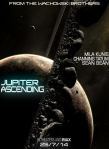 Jupiter Ascending (July release)
Jupiter Ascending (July release)
A new film by the magnificent Wachowski brothers (The Matrix is probably still my top film) this one stars Mila Kunis, Channing Tatum and Sean Bean. Jupiter Jones (Mila Kunis), enduring a humdrum existence on earth is found by a military hunter and informed of a cosmic destiny that matches the strange dreams she has enjoyed since she was young. Oh, sounds good to me!
Dawn of the Planet of the Apes (July release)
Following the moderate success of the reboot Planet of the Apes, the new movie explores the survival instincts that cause conflict between human and ape, after the virus that wiped out most of humanity. Caesar’s band of evolved apes begin to assert their physical superiority over the remnants of the human race. The incredible Andy Serkis stars, with Gary Oldman inventing another of his incredible silver screen persona.
Guardians of The Galaxy (August release)
Starring the voices of, amongst others, Bradley Cooper, Karen Gillan and er, Vin Diesel this incredible film would not have been made without the billion dollar success of The Avengers. For the readers of the comics, it’s a triumph to reach this far, for the everyday movie goer, the hope is for a cosmic Avengers. Tall order? We’ll see. The trailer is a cobbled together version of the comic artwork, so a more intriguing one will come soon.
Lucy is forced to become a drug mule. The plan goes awry as the drug instead enters into her system and she becomes strong, skillful and hyper-intelligent. Oh, and she can’t feel pain, and she can move stuff with her mind. Starring Scarlett Johnasson and Morgan Freeman, this is a cool new movie from Fifth Element’s Luc Besson. It’s got to be good! This is a news clip, rather than a trailer. Will update when I can…
 Hunger Games: Mockingjay Part 1 (November 2014)
Hunger Games: Mockingjay Part 1 (November 2014)
The final book, like J K Rowling’s Harry Potter is split into two. This first part, stars teen throbs Jennifer Lawrence, Josh Hutcherson, Liam Hemsworth and adult sophisticates Woody Harrelson, Elizabeth Banks, (the now late) Philip Seymour Hoffman and Donald Sutherland. There’s very little about this movie online, except that it’s the third in a highly successful franchise. Following on from the rescue at the end of Catching Fire Katniss Everdeen now finds herself as the leader of a rebellion against the tyranny of the government Capitol. Finding it difficult to know who to trust she has some difficult decisions to make, affecting her friends, family, and the fate of the districts she is determined to protect.
There is no reasonable trailer available. I’ll update when I find one. Just updated this post to include the new Mockingjay movie poster
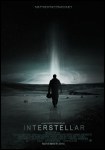 Interstellar (November release)
Interstellar (November release)
Directed by Dark Knight’s Christopher Nolan and starring Matthew McConaughey and, intriguingly, Anne Hathaway, Interstellar is based on the use of wormholes for time travel to the farthest borders of our scientific understanding. Couldn’t find much else on this, but sounds like a decent sf movie.
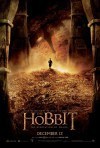 The Hobbit: There and Back Again (December release)
The Hobbit: There and Back Again (December release)
Final part of the impossibly long, but enthralling trilogy (if Hobbit is 3 films, Lord of the Rings should be at least 9!). Starring Benedict Cumberbatch, Cate Blanchett, Evangeline Lilly, Martin Freeman, Christopher Lee, Ian Mckellan, Hugo Weaving and so many more this is wraps iup Tolkein’s children’s story, now made into a family blockbuster. So let’s see how Peter Jackson conveys the mighty final drama of Bilbo Baggins, Thorin Oakenshield and his dwarves, as they try to reclaim the ancient Kingdom of Erebor. It’s hard to find a decent poster for this one at the moment, so here’s one from part 2, Hobbit: The Desolation of Smaug.
Bubbling Under
There are a number of other SF and fantasy movies coming in 2014, but they haven’t made my list: Robocop (February, surely nothing new), Godzilla (May, for aficionados only), Transformers: Age of Extinction (July, too young for me, too noisy for my daughter and too trite for my son!), Resident Evil (September, next one in the series, surely no different from the rest), Hercules, (July, with The Rock. Oh come on!)
So here’s to an amazing 12 months of fantastic movies. Some will surely disappoint, and some will surprise but there’s no shortage of ideas and excitement. Do you have any other movie suggestions? Let me know in the comment section below, or on Twitter.
Links
Here’s last year’s 2013 movie preview.
Here’s a post on the Top 10 Science Fiction Movies.
From 2013, here’s a couple of reviews: Iron Man 3, and Man of Steel.
From 2012, here’s the Avenger’s back story.
Filed under: Comic Books, Movie Posters, Movies, Superheroes Tagged: Andy Serkis, Angelina Jolie, avengers, Benedict Cumberbatch, Bradley Cooper, Captain America, Catching Fire, Cate Blanchett, Channing Tatum, Christopher Nolan, Dark fantasy, doctor who, emily blunt, Evangeline Lilly, Fifth Element, Frankenstein, Gary Oldman, Guardians of The Galaxy, Hobbit, Hugh Jackman, Hugh Jackman to James McAvoy, Hunger Games, Iron Man 3, James McAvoy, Jennifer Lawrence, Jennifer Lawrence to Patrick Stewart, johnny depp, karen gillan, Katniss Everdeen, Luc Besson, Man of Steel, Martin Freeman, Marvel movies, Mila Kunis, minority report, morgan freeman, movie trailers, oblivion, Patrick Stewart, Scarlett Johansson, science fiction, Sean Bean, Spiderman, thor, tom cruise, Vin Diesel, Wachowski brothers, X-Men







2014: Top 10 SF and Fantasy Movies (almost 20!)
 The sf and fantasy movies of 2013 certainly delivered at the box office, although nothing quite matched the highs of The Avengers in 2012. However, Iron Man 3, Wolverine, Star Trek Into Darkness and Thor, The Dark World brought some mighty entertainment to world still straining with the entrails of economic gloom. There were some turkeys too: After Earth and Oblivion, in Will Smith and Tom Cruise the big stars couldn’t guarantee big audiences, and Man of Steel, while it had some great moments, lacked of humour and humanity. Two really terrific movies in though were the second Hunger Games, Catching Fire and The Hobbit: The Desolation of Smaug, both significantly more effective than their predecessors, teasing out both emotional and narrative depth from potentially exhausted themes.
The sf and fantasy movies of 2013 certainly delivered at the box office, although nothing quite matched the highs of The Avengers in 2012. However, Iron Man 3, Wolverine, Star Trek Into Darkness and Thor, The Dark World brought some mighty entertainment to world still straining with the entrails of economic gloom. There were some turkeys too: After Earth and Oblivion, in Will Smith and Tom Cruise the big stars couldn’t guarantee big audiences, and Man of Steel, while it had some great moments, lacked of humour and humanity. Two really terrific movies in though were the second Hunger Games, Catching Fire and The Hobbit: The Desolation of Smaug, both significantly more effective than their predecessors, teasing out both emotional and narrative depth from potentially exhausted themes.
So, onto 2014, a fantastic mix of sf and fantasy, and a few more than the Top 10:
 I Frankenstein (January release)
I Frankenstein (January release)
This feels like a shiney TV series with some fabulous FX, but I’m a sucker for Frankenstein and if Sherlock can be updated to 21st then so can the good Doctor. Based on a graphic novel of the same name this is set in a present day future where Adam (yes, that’s a new name of Dr Frankenstein’s creation) is caught in a war between demons and gargoyles (I know!). Gothic horror and Bill Nighy, it’s got to have something going for it!
I guess this is meant to be the next teen blockbuster, after Twilight and Hunger Games. It looks interesting and has gritty dystopian feel (there it is again) as our hero, Beatrice has some sort of special mind (yep, she’s Divergent) which makes her impervious to the authoritarian controls of the society that surrounds her. Rebellion, adversity, rugged landscapes, this has it all (!). It does need some great acting, which the trailer certainly hints at.
 Captain America: The Winter Soldier (March release)
Captain America: The Winter Soldier (March release)
Chris Evans, Scarlett Johansson, Sam Jackson, Robert Redford, how can this fail? Well it won’t it’s going to be magnificent. I don’t like army films and I don’t like gun battles, and I really hate having someone else’s patriotism thrust in my face, but the first film worked because it focused on the qualities of the individual, a sort of wholesome everyman that we all hope hides in us all somewhere. I don’t care what this is about, the trailer is great (2nd one just released, below) and we’re going to see it!
 300: Rise of an Empire (March release)
300: Rise of an Empire (March release)
Based on a graphic novel by Frank Miller (oh yes!), a screenplay by Zack Snyder (Man of Steel), a follow-up from the grim brilliance of 300, with Eva Green (utterly brilliant in Dark Shadows) and a switch to the open sea this is powerful stuff. Based at that point in relatively ancient history when the Greek empire was beginning to resist the all-conquering Persians this promises a mix of astounding digital fx and dark mythology.
I ummed and ahed about this. Russel Crowe? Monosyllabic titan of mysogeny? Actually, he was probably born for this role, as long as we can forget his risible Robin Hood. Also stars Emma Watson (having survived Harry Potter intact she’s blooming into a terrific screen presence), and the ever reliable Anthony Hopkins, late of Odin (in Thor), now he’s Methuselah, a slight step down I suppose. This is portentous movie that revels in a defining moment in period of history. Gradiose and epic, it could be the movie event of the year.
Johnny Depp. Up to The Lone Ranger I would have said I’d watch any movie he was in. This sounds good though, A.I., consciousness and terrorism. Not sure what to make of it, but it’s intriguing. Morgan Freeman, as always, provides the usual gravitas.
 Under the Skin (April release)
Under the Skin (April release)
Scarlett Johansson plays an alien seductress who seeks out hitchhikers. I might regret including this, but I hope it has more mystery than salacious cliché; it’s an indie film, so worth supporting. Johnansson has a busy year, and is filming the next Avengers movie.
With its creepy, surreal movie poster and chilling trailer Oculus looks intriguing from the several months off release. Starring Karen Gillan, an engaging Doctor Who companion who guarantees a loyal fan base, in her first big movie role, it’s hard not to want this to succeed.
 Amazing Spiderman 2 (May release)
Amazing Spiderman 2 (May release)
The Rhino, Green Goblin and Jamie Foxx as Electro, this new take on the Spiderman franchise is moving into a higher gear. I’ll admit to some weary nostalgia on this but my daughter really likes Andrew Garfield, which is, ah, interesting.
Lana del Ray’s trippy ‘One Upon a Dream’ haunts the trailer of this spiky, powerful vehicle for Angelina Jolie as the ‘villain before she became a villain’, the witch queen of Sleeping Beauty. Somehow this reminds me of Jolie’s amazing performance as the monster’s mother, in Beowulf: a seductive, magisterial but tragically flawed character.
X-Men: Days of Future Past (May release)
Mark Millar (Marvel’s creative consultant for the the film) says, “You’ve got robots, you’ve got time travel, you’ve got superheroes – it’s got everything in one film.”
A follow-up to X-Men First Class, this is still a prequel to the first X-Men movie, and somehow manages to pack in almost every major star to have appeared in all the previous movies, from Jennifer Lawrence to Patrick Stewart, Hugh Jackman to James McAvoy. Hard to ignore, and long in the making, I hope it lives up to its promise.
Edge of Tomorrow (June release)
Tom Cruise and Emily Blunt head yet another soldier ‘who comes to the rescue of humanity’ sf thriller. Combinging undefeatable aliens with time loops and a rugged cast this is based on a story by Hiroshi Sakurazaka and there is a heavy manga feel to the plot. Cruise certainly works his socks off but let’s hope its more of Minority Report than the pedestrian Oblivion.
 Jupiter Ascending (July release)
Jupiter Ascending (July release)
A new film by the magnificent Wachowski brothers (The Matrix is probably still my top film) this one stars Mila Kunis, Channing Tatum and Sean Bean. Jupiter Jones (Mila Kunis), enduring a humdrum existence on earth is found by a military hunter and informed of a cosmic destiny that matches the strange dreams she has enjoyed since she was young. Oh, sounds good to me!
Dawn of the Planet of the Apes (July release)
Following the moderate success of the reboot Planet of the Apes, the new movie explores the survival instincts that cause conflict between human and ape, after the virus that wiped out most of humanity. Caesar’s band of evolved apes begin to assert their physical superiority over the remnants of the human race. The incredible Andy Serkis stars, with Gary Oldman inventing another of his incredible silver screen persona.
Guardians of The Galaxy (August release)
Starring the voices of, amongst others, Bradley Cooper, Karen Gillan and er, Vin Diesel this incredible film would not have been made without the billion dollar success of The Avengers. For the readers of the comics, it’s a triumph to reach this far, for the everyday movie goer, the hope is for a cosmic Avengers. Tall order? We’ll see. The trailer is a cobbled together version of the comic artwork, so a more intriguing one will come soon.
Lucy is forced to become a drug mule. The plan goes awry as the drug instead enters into her system and she becomes strong, skillful and hyper-intelligent. Oh, and she can’t feel pain, and she can move stuff with her mind. Starring Scarlett Johnasson and Morgan Freeman, this is a cool new movie from Fifth Element’s Luc Besson. It’s got to be good! This is a news clip, rather than a trailer. Will update when I can…
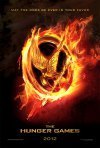 Hunger Games: Mokingjay Part 1 (November 2014)
Hunger Games: Mokingjay Part 1 (November 2014)
The final book, like J K Rowling’s Harry Potter is split into two. This first part, stars teen throbs Jennifer Lawrence, Josh Hutcherson, Liam Hemsworth and adult sophisticates Woody Harrelson, Elizabeth Banks, (the now late) Philip Seymour Hoffman and Donald Sutherland. There’s very little about this movie online, except that it’s the third in a highly successful franchise. Following on from the rescue at the end of Catching Fire Katniss Everdeen now finds herself as the leader of a rebellion against the tyranny of the government Capitol. Finding it difficult to know who to trust she has some difficult decisions to make, affecting her friends, family, and the fate of the districts she is determined to protect.
There is no reasonable trailer available. I’ll update when I find one.
 Interstellar (November release)
Interstellar (November release)
Directed by Dark Knight’s Christopher Nolan and starring Matthew McConaughey and, intriguingly, Anne Hathaway, Interstellar is based on the use of wormholes for time travel to the farthest borders of our scientific understanding. Couldn’t find much else on this, but sounds like a decent sf movie.
 The Hobbit: There and Back Again (December release)
The Hobbit: There and Back Again (December release)
Final part of the impossibly long, but enthralling trilogy (if Hobbit is 3 films, Lord of the Rings should be at least 9!). Starring Benedict Cumberbatch, Cate Blanchett, Evangeline Lilly, Martin Freeman, Christopher Lee, Ian Mckellan, Hugo Weaving and so many more this is wraps iup Tolkein’s children’s story, now made into a family blockbuster. So let’s see how Peter Jackson conveys the mighty final drama of Bilbo Baggins, Thorin Oakenfield and his dwarves, as they try to reclaim the ancient Kingdom of Erebor. It’s hard to find a decent poster for this one at the moment, so here’s one from part 2, Hobbit: The Desolation of Smaug.
Bubbling Under
There are a number of other SF and fantasy movies coming in 2014, but they haven’t made my list: Robocop (February, surely nothing new), Godzilla (May, for aficionados only), Transformers: Age of Extinction (July, too young for me, too noisy for my daughter and too trite for my son!), Resident Evil (September, next one in the series, surely no different from the rest), Hercules, (July, with The Rock. Oh come on!)
So here’s to an amazing 12 months of fantastic movies. Some will surely disappoint, and some will surprise but there’s no shortage of ideas and excitement. Do you have any other movie suggestions? Let me know in the comment section below, or on Twitter.
Links
Here’s last year’s 2013 movie preview
From 2013, here’s a couple of reviews: Iron Man 3, and Man of Steel.
From 2012, here’s the Avenger’s back story.
Filed under: Comic Books, Movie Posters, Movies, Superheroes Tagged: Andy Serkis, Angelina Jolie, avengers, Benedict Cumberbatch, Bradley Cooper, Captain America, Catching Fire, Cate Blanchett, Channing Tatum, Christopher Nolan, Dark fantasy, doctor who, emily blunt, Evangeline Lilly, Fifth Element, Frankenstein, Gary Oldman, Guardians of The Galaxy, Hobbit, Hugh Jackman, Hugh Jackman to James McAvoy, Hunger Games, Iron Man 3, James McAvoy, Jennifer Lawrence, Jennifer Lawrence to Patrick Stewart, johnny depp, karen gillan, Katniss Everdeen, Luc Besson, Man of Steel, Martin Freeman, Marvel movies, Mila Kunis, minority report, morgan freeman, movie trailers, oblivion, Patrick Stewart, Scarlett Johansson, science fiction, Sean Bean, Spiderman, thor, tom cruise, Vin Diesel, Wachowski brothers, X-Men







January 28, 2014
Only Connect: The Naming of Things: Part Two
 Art and Artists
Art and ArtistsThe first post of this two-parter looked at the naming of things in music, fiction and poetry. This one tackles the painted arts, and the philosophy of naming.
Representational art is very popular. It appeals to our sense of the familiar and even when it tackles the big life issues, it offers one redeeming quality: a sense of beauty, either in the subject or the style. And the names, the titles of the pieces leave nothing to the imagination. It’s hard not to enjoy enjoy the line, colour and passion of Michelangelo’s Creation of Adam, da Vinci’s Mona Lisa, Millais’s Ophelia and Monet’s Impression at Sunrise, and William Morris’ flowing textile designs are seductive and fascinating, but my heart belongs with the modernists of the 20th century, and its many sub-categories, Fauvists, Surrealists, Cubists, Futurists and, above all, Abstract Expressionists. I’m particularly drawn to the raw, internal eye of expressionism, with its exploration of the human condition, through its engagement with the viewer. For me, it teases more from its audience than the classical effulgence of (an admittedly sumptuous) painting by Alma Tadema.
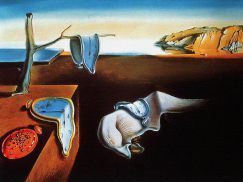 Art can be ugly, and exciting (Dali, left), dirty and joyful (Jackson Pollock), dark and elated (Marc Rothko), vibrant and other-wordly (Gerhard Richter). These are artists whose work work draws us in, and demands a response. They require an intimate engagement and reward submersion: the viewer must participate, not passively, but be enveloped, actively interpret, and become part of the process of creating something beyond the two dimensions of the painted form. We are creatures not just of sight, but of the five senses, and emotion: a great piece of art can consume the whole of us. This is not a manifesto for a certain type of art, but a recognition of our response to art; we always interact with a painting, or sculpture, whether we like it or not, indeed painting in a dark cupboard is barely art because it needs to am audience to become fully realised.
Art can be ugly, and exciting (Dali, left), dirty and joyful (Jackson Pollock), dark and elated (Marc Rothko), vibrant and other-wordly (Gerhard Richter). These are artists whose work work draws us in, and demands a response. They require an intimate engagement and reward submersion: the viewer must participate, not passively, but be enveloped, actively interpret, and become part of the process of creating something beyond the two dimensions of the painted form. We are creatures not just of sight, but of the five senses, and emotion: a great piece of art can consume the whole of us. This is not a manifesto for a certain type of art, but a recognition of our response to art; we always interact with a painting, or sculpture, whether we like it or not, indeed painting in a dark cupboard is barely art because it needs to am audience to become fully realised.
 The Untitled Title
The Untitled TitleDescriptive names moved from the heroic and Biblical painting of a long classical period (Da Vinci’s Last Supper, Bouguereau‘s Cupid and Psyche), through the Impressionists’ charming idylls (see Renoir’s Dance in the Country) and the late Victorian Pre-Raph’s search for the organic and the natural (Arthur Hughes‘ Eve of St Agnes). Modernism, a phenomenon of the industrial, social and political change around the turn of the 19th Century wrestled with the naming issue because it broke from the past, to fleeing from the face of photography and retreating into the subjective realms of the inner voice. This complicated the naming process because it’s simpler to encapsulate a scene in a name, but more of a challenge to offer the viewer a part in the art.
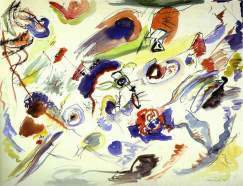 The answer for many of modernists was to use “Untitled” as a name: Kandinsky 1910 painting (left) was probably the first abstract painting, but others, Rothko, Rauschenberg, Kline to name a few, have subjected their audiences to a title without a name. For some, this seems to go too far, offering nothing to the viewer: the title is so bare it’s almost negative, a vacuum. Others even argue that it’s too easy or lazy to use “Untitled”, but that at least, misses the point, because the artists have a made a clear choice to deny the viewer a way in, to force them to address the painting alone. Neo Rauch (a sort of neo-realist) however calls the use of “Untitled” disrespectful to the viewer, gallery owner even, laying bare the commercial side of the art, and the need to appeal to an audience.
The answer for many of modernists was to use “Untitled” as a name: Kandinsky 1910 painting (left) was probably the first abstract painting, but others, Rothko, Rauschenberg, Kline to name a few, have subjected their audiences to a title without a name. For some, this seems to go too far, offering nothing to the viewer: the title is so bare it’s almost negative, a vacuum. Others even argue that it’s too easy or lazy to use “Untitled”, but that at least, misses the point, because the artists have a made a clear choice to deny the viewer a way in, to force them to address the painting alone. Neo Rauch (a sort of neo-realist) however calls the use of “Untitled” disrespectful to the viewer, gallery owner even, laying bare the commercial side of the art, and the need to appeal to an audience.
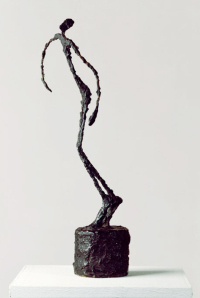 Rauch arrives with respectable friends: Giacometti’s Man Falling, Dali’s Leda Atomica, Picasso’s Girl Before A Mirror. These were rare beasts, these artists so successful in their lifetime. Perhaps the key though, apart from the obvious skill and energy, was their acute sense of the commercial, including the power of a narrative title. Both Picasso and Dali were masters of a name that told a story whether challenging, ironic or subtly undermining. People (i.e. audiences) like a story, they’re engaged by its direction, imagine its world, its endings.
Rauch arrives with respectable friends: Giacometti’s Man Falling, Dali’s Leda Atomica, Picasso’s Girl Before A Mirror. These were rare beasts, these artists so successful in their lifetime. Perhaps the key though, apart from the obvious skill and energy, was their acute sense of the commercial, including the power of a narrative title. Both Picasso and Dali were masters of a name that told a story whether challenging, ironic or subtly undermining. People (i.e. audiences) like a story, they’re engaged by its direction, imagine its world, its endings.
Of course this begins to stray into dangerous territory: is this ‘art’, this descriptive naming, like an illustration, a caption? Is it entertainment, or expression, engagement even? If it’s entertainment the art needs a name with a story, to be commercial, or at least, to play at being popular. But is that ‘art’? Well I don’t think it’s not-art, without meaning to be anti not-art, or “anti anti-art”, as the Stuckists might say.
 Which leads us to Marcel Duchamp. For many he pushed modernism to its logical extreme, for others he brought the travesty of Damien Hurst and modern, elitist non-art art forms. Duchamp created a new perception of art that replaced value in the skill of the artist with a sensibility that could be expressed through objects and concepts, that rejected the limits of the static two dimensional art and expressed the intention of the mind rather than the facility of the hand and eye. His titles played with the expectations of the viewer, Why Not Sneeze Rose Sélavy? (above), Fresh Widow, Fountain, challenged and fought for our attention; as such, they’re typically modernist, but Duchamp’s ready-mades and objects speak a different language of art, make us think about our responses. His challenge of the established elite of his time was to be admired, but his legacy has become more questionable and created its own form a form of exclusivity.
Which leads us to Marcel Duchamp. For many he pushed modernism to its logical extreme, for others he brought the travesty of Damien Hurst and modern, elitist non-art art forms. Duchamp created a new perception of art that replaced value in the skill of the artist with a sensibility that could be expressed through objects and concepts, that rejected the limits of the static two dimensional art and expressed the intention of the mind rather than the facility of the hand and eye. His titles played with the expectations of the viewer, Why Not Sneeze Rose Sélavy? (above), Fresh Widow, Fountain, challenged and fought for our attention; as such, they’re typically modernist, but Duchamp’s ready-mades and objects speak a different language of art, make us think about our responses. His challenge of the established elite of his time was to be admired, but his legacy has become more questionable and created its own form a form of exclusivity.
The Philosophy of Names
The relative power of a name depends on the purpose of the art, the music, the fiction or the poetry. The naming of us humans and animals teaches the importance of labels that last a lifetime so understanding the processes of naming is useful and offers an insight into the effect that names have on us.
 For some, names have utter and specific significance: naming your child Mohammed signals the clear beliefs of the parents; in a Christian tradition the use of strong biblical names such as John, Peter, Paul are more oblique because they have become detached from their exclusive religious context in a Western society that has eroded its religous core. However, such names still bring references and inferences: a child called Peter is more likely to come from one tradition than another, and that offers clues to their upbringing, and therefore their attitudes and perhaps their character. Of course giving a work of art a descriptive label (such as Dali’s Persistence of Memory, above) brings a wave of resonance to the viewer and informs their engagement. For every form of communicable artistic endeavour its name needs to be understood if it is to achieve any form of success.
For some, names have utter and specific significance: naming your child Mohammed signals the clear beliefs of the parents; in a Christian tradition the use of strong biblical names such as John, Peter, Paul are more oblique because they have become detached from their exclusive religious context in a Western society that has eroded its religous core. However, such names still bring references and inferences: a child called Peter is more likely to come from one tradition than another, and that offers clues to their upbringing, and therefore their attitudes and perhaps their character. Of course giving a work of art a descriptive label (such as Dali’s Persistence of Memory, above) brings a wave of resonance to the viewer and informs their engagement. For every form of communicable artistic endeavour its name needs to be understood if it is to achieve any form of success.
Internal Names
If we don’t want the resonances, but a label that intrigues and prompts discovery, perhaps we can use made-up, or ancient names that nobody knows (H.P. Lovecraft‘s Cthulhu mythos is an obvious example), which can achieve an association only to the fiction, music or painting, with no other references. Wittgenstein’s thoughts on the internal nature of pain (in Philosophical Investigations) are helpful here because he points out that pain can only be felt internally by the person with the pain, but that we can learn to read the external signs and identify it, name it. A child is the same, understanding the moods and subtle signs of its family’s emotional temperature that might be missed by an outsider. The artist too can make this choice, should the name become part of the intrigue of the work, understood only by the artist? or is it a cosmic can-opener, a gateway into the painting.
It is hard to avoid inference of any sort if familiar language is used; even the bark of a dog is more than just a noise, it has some level of meaning and anyone who knows their own animal will be able to differenitate between a bark that warns, expresses excitement, or one of fear.
Repeated or understood, names bring meaning, even if it take some thought or use to tease it out. Ultimately a name can prompt satisfaction, through recognition, but for a painting this is dangerous because, for my purpose at least, it directs the viewer too obviously.
Conclusions
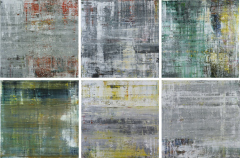 So, it is difficult to separate the naming of a piece of work from its potential public. The association of a name with a work of art invests a value in the name and the content or object, and that creates social capital, if not always artistic integrity. Words are like equations, with worlds of meaning either implied or explicit; unlike equations they have an emotional reference, even if they’re objective, and they must either satisfy or intrigue.
So, it is difficult to separate the naming of a piece of work from its potential public. The association of a name with a work of art invests a value in the name and the content or object, and that creates social capital, if not always artistic integrity. Words are like equations, with worlds of meaning either implied or explicit; unlike equations they have an emotional reference, even if they’re objective, and they must either satisfy or intrigue.
Any form of art (fiction, sculpture, song) is only a failure if it does not prompt a response and the name of a work of art attempts to direct that response. Writing, painting, music, fiction, all forms of creativity need an audience; we can’t create in a vacuum, we crave appreciation, but we also worry about “selling out.” At the heart of this are the decisions that lead to the naming of things because although art, in all forms should challenge, entertain and engage, above all, it must be heard and the name of the work offers a starting point, and directs the initial response. Effective names must have some identifiable reference points to have any chance of finding an audience.
Good blogging advice tells me that you’ll be thoroughly bored by now, so although I’ve split the post, it’s still very long! I hope you’ve found it interesting: do you find it hard to name your work? I’d love to hear.
Actually, I have one more post on this topic, but it’s much shorter and relates only the names of my own work, so I’ve separated it out from this more general post.
Thank you for reading.
Links (external)
Some excellent Giacometti from Tate links here.
A good Marc Rothko link from The National Gallery of Art in Washington DC here.
Gerhard Richter home page is here.
Neo Rauch links here.
For more about the Stuckists (an anti conceptual, anti-ready made art movement), here.
For a brutal, interesting view about naming for commercial sale, check here.
From the MOMA in New York, an explanation of Marcel Duchamp‘s Why Not Sneeze Rose Sélavy here.
Links (These Fantastic Worlds)
For more about the Futurists.
Companion to this piece, The Naming of Things, Part One .
Do take a look at the beginning of the Only Connect thread, which is an ongoing investigation.
Filed under: Art & Artists, Only Connect, Writer's Advice Tagged: modern artists







January 23, 2014
Only Connect: The Naming of Things: Part One
 I’ve been painting most nights: acrylics, layer upon layer, broadly expressionist, abstract, intimate. But one thing troubles me: what do I call the paintings? You’d think it would be simple, but the ‘naming of things’ is not to be undertaken lightly. With its immediacy a painting seems to be different to a book, or a piece of music, and not quite the same as an illustration or an artwork but the process of naming raises questions about our response to art in the broad sense of artistic endeavour. This could stray into a discussion about about elitism vs popularism, but it’s an enquiry into the codes and questions that sit behind the fact of and the consequences of ‘naming’. Inevitably, intention is the key.
I’ve been painting most nights: acrylics, layer upon layer, broadly expressionist, abstract, intimate. But one thing troubles me: what do I call the paintings? You’d think it would be simple, but the ‘naming of things’ is not to be undertaken lightly. With its immediacy a painting seems to be different to a book, or a piece of music, and not quite the same as an illustration or an artwork but the process of naming raises questions about our response to art in the broad sense of artistic endeavour. This could stray into a discussion about about elitism vs popularism, but it’s an enquiry into the codes and questions that sit behind the fact of and the consequences of ‘naming’. Inevitably, intention is the key.
Online, In print, In store
In these days of organic searches, SEO, metrics and algorithms, names have become of critical. The domain name of the website, the name of the blog, the title of the blog post, the tags, categories, the rhythms of online traffic all point to the primary significance of naming. Without a carefully targetted name, an internet search will not pluck your blog, post, product or piece of work and thrust it onto the all-important first page of a Google or a Bing search. Such names bring more traffic, but another reason for the traffic is often that a strong or evocative name brings a narrative with it, tells a story. In many forms of art, in books, music, there are differing views about the value of narrative titles, and different intentions behind the reason for a particular name.
Music
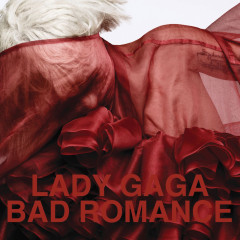 The type of music we hear, from our mp3 players, smartphones, computers, hi-fi systems, in lifts and retail stores has never been more fragmented, but there is a clear divide in the naming that straddles all forms of music, from rap to pop, classical to jazz, musical theatre to the blues: some titles describe (event, person, emotion, such as Lady Gaga’s Bad Romance), others intrigue (Elton John’s Candle in the Wind), but generally the chart songs, pop, rock and country-flavoured, tend to hang the name onto the hook of a chorus, and rely on repetition for a powerful phrase to name the song, so it must be catchy, or obvious, or memorable in some way (Paul Simon’s Fifty Ways to Leave Your Lover). In the modern era, the name of the piece of music is designed almost exclusively to bring an emotional resonance, with specific reference to people, places and feelings, with which the target audience is intended to identify. It offers a direct simplicity, telling the listener what they should hear, how they should respond.
The type of music we hear, from our mp3 players, smartphones, computers, hi-fi systems, in lifts and retail stores has never been more fragmented, but there is a clear divide in the naming that straddles all forms of music, from rap to pop, classical to jazz, musical theatre to the blues: some titles describe (event, person, emotion, such as Lady Gaga’s Bad Romance), others intrigue (Elton John’s Candle in the Wind), but generally the chart songs, pop, rock and country-flavoured, tend to hang the name onto the hook of a chorus, and rely on repetition for a powerful phrase to name the song, so it must be catchy, or obvious, or memorable in some way (Paul Simon’s Fifty Ways to Leave Your Lover). In the modern era, the name of the piece of music is designed almost exclusively to bring an emotional resonance, with specific reference to people, places and feelings, with which the target audience is intended to identify. It offers a direct simplicity, telling the listener what they should hear, how they should respond.
Music: Classical
 As you’d expect, Classical music is a little more nuanced. Although choral music and chanson offer breadth to the musical palette it’s instrumental music that dominates and such music tends to be described and numbered: Mahler’s Symphony No 4, Mozart’s Sonato for Two Pianos in D major, Bach’s Cantata 51. These were catalogue entries by professional musicians who created hundreds of works of art but whose music was listened to by audiences who appreciated the body of the work, using the names only to identify one piece against another. The key of the work was often noted because that also gave the knowledgeable audience a clue to the mood and substance of the music: a work in C major offered simplicity and innocence, F sharp minor was gloomy; A major, joyful and organic.
As you’d expect, Classical music is a little more nuanced. Although choral music and chanson offer breadth to the musical palette it’s instrumental music that dominates and such music tends to be described and numbered: Mahler’s Symphony No 4, Mozart’s Sonato for Two Pianos in D major, Bach’s Cantata 51. These were catalogue entries by professional musicians who created hundreds of works of art but whose music was listened to by audiences who appreciated the body of the work, using the names only to identify one piece against another. The key of the work was often noted because that also gave the knowledgeable audience a clue to the mood and substance of the music: a work in C major offered simplicity and innocence, F sharp minor was gloomy; A major, joyful and organic.
However, although classical music’s roots are embedded in medieval devotional rituals when they moved intoto the living rooms of the rich and musically literate elite of the 1700s, classical and romantic composers, their lighter sonatas flirted with seductive names that suggested moods and hinted at other, emotional resonances. (Beethoven’s Moonlight Sonata, Debussey’s Claire de La Lune). Naming became more complicated, less dry, less elite and more accessible to those who responded to a good melody.
Literature
Naming in literature is fairly straightforward, and certainly no indicator of quality or popularism. Shakespeare, whose language transcends description with its sophisticated ease and facility, used the character names of his protagonists for his most popular plays: Hamlet, Macbeth, King Lear. Perhaps it’s the sign of a confident writer who knew his audience. In Elizabethan times the theatre was the primary entertainment and Shakespeare could be trusted to deliver an enthralling night out, with strong central characters, so a resonance of expecation, at least, was carried even with the simplest of titles.
Powerful and popular genre fiction, such as Frank Herbert’s Dune series, or Tolkein’s Lord of the Rings, C.S. Lewis’s The Lion, the Witch and The Wardrobe, George R. R. Martin’s Game of Thrones all resort to the direct appeal of a descriptive title; we know what the words mean, we understand the genre within which the author writes and we infer meaning attached to the simplest of titles because we think we understand the intentions of the author.
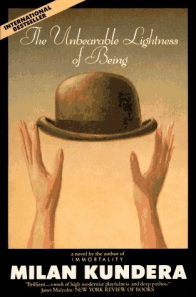 Of course, for every Harry Potter we have an Unbearable Lightness of Being where Kundera’s lightness of touch is aided by the intrigue of the name for his work, and the challenge of the new that it brought on first publication in 1984. The capacity to manipulate subtly still exists, even in the most mass market of literary phenomena: soft-porn masquerading as literature. The 2012 publishing sensation that was Fifty Shades of Grey offered a suitably oblique name, that played with the potential reader’s coy interest. Of course, once the nature of the text had been outed then the name became irrelevant.
Of course, for every Harry Potter we have an Unbearable Lightness of Being where Kundera’s lightness of touch is aided by the intrigue of the name for his work, and the challenge of the new that it brought on first publication in 1984. The capacity to manipulate subtly still exists, even in the most mass market of literary phenomena: soft-porn masquerading as literature. The 2012 publishing sensation that was Fifty Shades of Grey offered a suitably oblique name, that played with the potential reader’s coy interest. Of course, once the nature of the text had been outed then the name became irrelevant.
Literature: Poetry
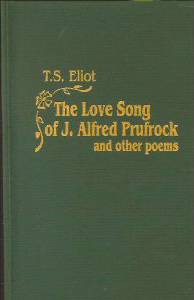 Before we leave literature we should touch on poetry. I wince when a poet reads their own work live on the TV or radio. Somehow poetry is too private, too personal to be exhumed in this way. A reading, particularly by the creator (with the exception of scintilating performance poets like Benjamin Zephaniah) can obscure the intention of the verse with unintended inflection; even the sound of the voice is disruptive. Because of their short form, the title of a poem is particulalry powerful and is an intrinsic part of the action of the language on the page, working with or against the body of the poem. Poetry is a condensed form, creating worlds in a few short lines; but if the verse creates the worlds, then the name, the title creates universes of meaning: T. S. Eliot’s journey from a youthful ‘Love Song of J. Alfred Prufrock’,through the confident middle period ‘Wasteland’, to the destination of ‘The Four Quartets’ offer a journey from simple character description, through mood reflection to, finally, the neutrality of a form or record, gravid with musical inference. Eliot’s private journey is shared through the arc of his writing and signposted by the transformation of titles of his poetry. The intentions manifest within the names are clear and altered with the passage of time, as his writing became more subtle.
Before we leave literature we should touch on poetry. I wince when a poet reads their own work live on the TV or radio. Somehow poetry is too private, too personal to be exhumed in this way. A reading, particularly by the creator (with the exception of scintilating performance poets like Benjamin Zephaniah) can obscure the intention of the verse with unintended inflection; even the sound of the voice is disruptive. Because of their short form, the title of a poem is particulalry powerful and is an intrinsic part of the action of the language on the page, working with or against the body of the poem. Poetry is a condensed form, creating worlds in a few short lines; but if the verse creates the worlds, then the name, the title creates universes of meaning: T. S. Eliot’s journey from a youthful ‘Love Song of J. Alfred Prufrock’,through the confident middle period ‘Wasteland’, to the destination of ‘The Four Quartets’ offer a journey from simple character description, through mood reflection to, finally, the neutrality of a form or record, gravid with musical inference. Eliot’s private journey is shared through the arc of his writing and signposted by the transformation of titles of his poetry. The intentions manifest within the names are clear and altered with the passage of time, as his writing became more subtle.
This is a long post, so I’ve had to divide it into two. The second half covers Art and touches on the philosophy of naming…
Links
Here’s a terrific reading of Elliot’s Prufrock, by the Anthony Hopkins:
Only Connect: The Naming of Things: Part Two (next post, next week)
Posts in the ongoing Only Connect sequence begin here.
William Blake was a writer/artist/visionary whose names and titles ranged from the obscure to the oblique! here.
Filed under: Art & Artists, Echoes & Origins, Only Connect, Writer's Advice Tagged: Fiction, music, philosophy, Romantic Era, Tolkien







January 7, 2014
Fibonacci 0
Oh it’s been a long year of endless nights and hard work, daughters and sons and families, and obligations, and life, life, life, but somehow the sun rises every day, passes and the night brings peace. And writing. And painting. And music. And the stars. And the fight against sleep!
Still, over the holiday, between shopping and family visits, I did manage to make a short video, Fibonacci 0. It combines, music, graphics and science, and all through the fabulous, forgiving medium of Youtube.
It’s hard not to be fascinating by the implications of Fibonacci sequences and the golden section. All around us, in the movement of the stars, the growth pattern of molluscs, plants reaching for the sun, the pleasing proportions of a Renaissance painting, the spiral staircase of the Sagrada Famillia. There does seem to be grand pattern, at least a logical one, depending on your philosophical views. So, here’s the video:
The Music
I decided last year to carve some tiny spaces and make some more music, but without featuring the guitar sound that dominates my musical landscape. Probably daft, but interesting. So, I stuck to keyboards and drums. I’ve been exploring flamenco for the last five years. Although it’s not my tradition I love the passion of Paco de Lucia and his compratiots, the colours and the textures of a music that has its roots in Arabic quarter notes, transported through North Africa to arrive transformed and blinking in the Spanish sun of medieval, arabic Spain. And that has broken my old songwriting brain, forced me to abandon verse/verse/chorus/verse/chorus (in 4/4 or 6/8) for a more fluid expression of set pieces, more instinctive and organic.
So, Fibonacci sequences gave me another, different way of creating music. In early 2013 I wrote a few pieces, in D Major and E major, using Fibonacci progressions: 0, 1, 1, 2, 3, 5, 8, 13, 21, 34, 55; (that’s where I stopped). In this video, the music emerges from nothing, into a single bar with a musical shape, followed by a different one, then two others, and building into 3, 5 bars and cycles of 8s and 13s. Ultimately the piece is compromised by repetition, but hey, in the natural world, repetition is good!
The video
The images were easy, lots of shells and flowers, staircases, all bursting with Fibonacci significance, swirling up and down, followed by some great footage of fleeing highways, underground tunnels, disappearing back into the structures of the universe and ultimately disappearing into smoke. It’s not meant to be profound, just interesting and explores some of the themes expressed in the fiction and paintings I’m creating.
More to Come
It’s going to be slow on the music front because I’m painting late at night and writing at weekends, but I have some other a Fibonacci sequences (and flickering images of apparitions in forests!), so they’ll come out as a video sometime soon. And there’s an album too, but I need to weave in the flamenco which will take a while.
So, I hope you enjoyed this exploration. I have some new posts on the painting, fiction, SF and Fantasy films of 2014, more on the Only Connect thread (here), on William Blake, Picasso, Philip K. Dick and others coming too. In the meantime, please feel free to look around and explore These Fantastic Worlds.
By the way, hope you like the new look for 2014!
Filed under: Projects Tagged: cosmology, fibonacci, golden section, Paco de Lucia, Time, video







September 26, 2013
Echoes & Origins: Painting & Writing
 I’ve started painting again. Ten years ago I put my easel under the bed, for good reasons at the time (children, space, lack of inspiration, life, blah). But now it’s out and dominating my energies late at night in that gap between feeling tired and actually forcing myself up to bed.
I’ve started painting again. Ten years ago I put my easel under the bed, for good reasons at the time (children, space, lack of inspiration, life, blah). But now it’s out and dominating my energies late at night in that gap between feeling tired and actually forcing myself up to bed.
Although I write in the mornings at the weekend, my best creative time is after at midnight. Older now, I can’t keep going as late as I used to but I’m enjoying the reconnection to a part of me that seemed to have been left behind forever.
New Work
I’ve planned a series of paintings around the same themes as the world of the fiction I’m currently writing. So far one book (of a trilogy), one novella and 6 short stories are drafted, each exploring aspects of a universe dominated by characters striving against forces beyond their control, and the nature of their own existence. The fictional world stretches from the beginnings of the universe to the present day and features a band of musicians, the Sidhe, a hunter of dark demons and a host of diverse characters. The storytelling method uses three threads of time: the tales of the Sidhe told from their POV through epic poetry, a discovery of ancient fragments offering a narrative from the beginnings of the universe, and the everyday thrust of the main story which focuses on a group of young friends coming together as a band. The short stories and the novella deal with the consequences of actions in the first book.
The painting in this post is a method test, to make sure both content and technique reflect the themes of the fiction. Created over several days (one layer per day to allow the paint to dry sufficiently) the use of acrylic paint allows for a writing-like rhythm and forces a healthy amount of contemplation in-between.
Key Themes
Perceptions and concepts of time, time events, moments and flows. Essential to the story and the paintings.
Exploring the themes of beginnings as endings, endings as beginnings.
Exploring collisions of light and dark, manifesting as particles, people, avatars, spirits, shadows and spectra of light.
The essential unity in duality: ‘being not being’, ‘action and inaction’, ‘bound and unbound’
The enduring conflict between fated actions vs self-determination. The free flow of paint takes on a life of its own and creates rhythms within its own system (the canvas).
The conflict between the eternal and the finite with the presence of the pre-eternal undermining the concept of the eternal.
Exploring the First Law of Thermodynamics, the Conservation law of Energy.
Textures, flowing lines and layers built on layers reflect the actions of micro-atomic particles and explore the implications of quantum mechanics on the greater movements of planetary systems.
So, plenty of themes to work with here, probably for a lifetime and beyond! The paintings, the stories, with poetry and music too the Echoes and Origins project is developing into a large and absorbing ecosystem of creative work and discovery.
Painting Technique – The First Test, ‘Intersection.’
The main paintings will be on large canvas, 40 x 60 ins using acrylics, primarily impasto strokes with no black, lots of white. The paints are by Daler Rowney and (mainly) Liquitex Acyrlics.
The plan is for a series of 4-6 paintings with pencilled sketch starts then bold strokes on canvas. Inspirations include William Blake’s prophetic illustrations, Marc Rothko and Gerhard Richter’s expressionist work.
This technique test builds into the intersection between light and dark, exploring the overlaps, the leaks from one world into the next. The painting steps:
Using an old, slightly wrinkle, stretched watercolour paper 20 x 30 ins
Gesso base
Crimson Red impasto layer. Brush and blade
Incandescent white (translucent) strokes, very large brush, coarse hair, round end.
Titanium White (dense) highlights top half.
Vivid lime green strokes on bottom half
Cerulean blue, brush and blade, bottom half
Cobolt Teal upper parts of lower half
Permanent Green, lower parts of lower half
Irridescent White medium brush, short strokes, top half
Cerulean Blue medium strokes bottom half
Permanent Green, medium brush, dry strokes
Ultramarine Blue (dark but bright), thick layers, medium brush,
Score through the wet paint layers to reveal layers underneath and increase texture
Indathrene blue (dark) lower half with brush and blade
Mixed gloss medium with Titanium White. Small strokes, thick paint.
Paynes Grey and Indathrene Blue lower half. Dry brush.
Titanium White dry brush, blending the middle
Purple strokes to enhance the colour under the layers of dark
Titanium White dry brush, blending the middle and top
Cerulean Blue strokes to bring out blue underneath.
Paynes Grey dry brush bottom half
Titanium White dry brush top half.
Paynes grey and Titanium White dry brush in the middle
Finish with Titanium white drusg brush across the whole area.
Need to decide whether to seal the painting with varnish medium.
So here are a few more views of the test, interesting I hope. Let me know what you think. Thank you.
[image error]
[image error]
[image error]
[image error]
[image error]
[image error]
[image error]
Filed under: Art & Artists, Fiction Tagged: acrylics, Gerhard Richter, Marc Rothko, Time, William Blake

August 20, 2013
Only Connect: J. Allen St. John
 J. Allen St. John was a fine golden age illustrator of fantastic worlds, early adventure fantasy and science fiction. He is most famous for his Tarzan and John Carter of Mars art for Edgar Rice Burrough’s (ERB’s) famous work in novel and pulp magazine form but his influence reached Roy G. Krenkel and the imperious Frank Frazetta and he lived through one of the most powerful periods of change in human cultural history.
J. Allen St. John was a fine golden age illustrator of fantastic worlds, early adventure fantasy and science fiction. He is most famous for his Tarzan and John Carter of Mars art for Edgar Rice Burrough’s (ERB’s) famous work in novel and pulp magazine form but his influence reached Roy G. Krenkel and the imperious Frank Frazetta and he lived through one of the most powerful periods of change in human cultural history.
Only Connect
J. Allen St. John’s life spanned the fascinating period of change that broke through the beginning of the 20th Century as technology and radical free thinking bore the child that became modernism in art, music and literature. Born in Chicago to first generation Irish immigrants in 1872, he was moved to Paris for three years with his mother (a portrait painter) in 1880 just as the full force of Impressionism, washed across the salons and cafes of Parisian creative life. The glorious paintings of Monet, Renoir, Manet and Degas and their experiments with light penetrated even the dourest of traditional drawing schools.
It was an era when technology brought colour into the print technology, photography and, a few years later, into the movies too. And music in the 1920s breaking the hold of classical traditions, the powerhouse of Chicago Blues, Blind Lemon Jefferson and Big Bill Broonzy. It is more likely that St. John listened, if anything to the jazz flavours of Gershwyn or the syncopated joys that inspired F. Scot Fitzgerald’s Great Gatsby, the flowering of art deco.
 Edgar Rice Burroughs and Robert E. Howard
Edgar Rice Burroughs and Robert E. HowardAlthough he lived through this period of change St. John’s own revolutions were limited to the nature of his publications. He escaped from the formal drawing school straightjackets and began and was amongst a burgeoning class of talented illustrators, coinciding with Howard Pyle, N.C. Wyeth and Maxfield Parrish amongst others, whose worked adorned the fantasy adventures that have become a popular phenomenon of the early twentieth century, as new book publishers and pulp magazines grew in popularity. He became the artist of choice for ERB’s Tarzan and John Carter of Mars, and illustrated many covers for the likes of Amazing Stories, Fantastic Adventures and Weird Tales where his cover art often featured the pulp heroics of Robert E. Howard, E. Hoffman Price and H.P. Lovecraft.
Style, Techniques and Influence
 St. Johns’ art was fluid and graceful, full of character and power. His illustrations of the wildlife and the creatures in Tarzan are amongst his most successful works because he captured the natural grace of the world around him. His portrayal of the heroic figures in the stories captured the same grace and natural charm, but he was rooted in the sensibilities of his formal training: the women were demure and poised, the men were lithe and muscular and completely without the exaggeration of form that distinguished his most well-known successor, Frank Frazetta. Other great artists who later revelled in the same arena of adventure fantasy, such as Roy G. Krenkel (see here for a perfect comparison) and Jeffrey Jones also enjoyed the restrained lines of St. John and his influence can be found in the graceful curves of the Silver Surfer and Captain America (rather than Superman or Thor) of the hugely successful comic-book films that have come to dominate the movie charts.
St. Johns’ art was fluid and graceful, full of character and power. His illustrations of the wildlife and the creatures in Tarzan are amongst his most successful works because he captured the natural grace of the world around him. His portrayal of the heroic figures in the stories captured the same grace and natural charm, but he was rooted in the sensibilities of his formal training: the women were demure and poised, the men were lithe and muscular and completely without the exaggeration of form that distinguished his most well-known successor, Frank Frazetta. Other great artists who later revelled in the same arena of adventure fantasy, such as Roy G. Krenkel (see here for a perfect comparison) and Jeffrey Jones also enjoyed the restrained lines of St. John and his influence can be found in the graceful curves of the Silver Surfer and Captain America (rather than Superman or Thor) of the hugely successful comic-book films that have come to dominate the movie charts.
Links
It is hard to find much of St. John’s work in print, but there are some books available from Old Tiger Press (see a review here) and several good sites online with examples of his work in the fantastic worlds of science fiction and fantasy.
Helpful external links: a short biography of J. Allen St John here, J. Allen St John and John Carter of Mars, J. Allen St John and ERB and an incredible site with so much art on the Golden Age artists.
Pinterest Board with other Golden Age Illustrations images here.
The thread for this series of posts begins with Only Connect.
Coming soon: Futurism in Art; Futurism in Music; Cubism; Vorticism; The Fauvists; Abstract Expressionism in Art; Pop Art; Pulp Magazines; Baudelaire and the Symbolists; Bauhaus; Debussy’s Expressionism. Einstein and the Fantastic.
Other interesting Links from this blog: Roy G Krenkel, Jeffrey Catherine Jones,
I hope you enjoyed this blog. There’s so much to write I barely scratched the surface, so much more to come.
[image error]
[image error]
[image error]
Filed under: Art & Artists, Fiction, Only Connect Tagged: ERB, Frank Frazetta, John Carter of Mars, Roy G. Krenkel, Tarzan

August 13, 2013
Writer’s Journal: Steampunk Arm
 Steampunk is steadily moving out of its cultish origins. It’s shifted from the Zeppelins and other 20th century technology being transplanted into Victorian times, to a wider range of more interesting modes. The number of images online of bodice-boasting, time-piece-adorned fashion cosplay photos and craft items has brought a stylish new aesthetic into the genre and expanded it’s horizons. And for some, this has become a serious cosplay phenomenon, the appeal being, I think, the adaptability of steampunk for crafted personal creativity, using timepiece elements, fanciful goggles, top hats, cloaks and various copper or brass metal elements.
Steampunk is steadily moving out of its cultish origins. It’s shifted from the Zeppelins and other 20th century technology being transplanted into Victorian times, to a wider range of more interesting modes. The number of images online of bodice-boasting, time-piece-adorned fashion cosplay photos and craft items has brought a stylish new aesthetic into the genre and expanded it’s horizons. And for some, this has become a serious cosplay phenomenon, the appeal being, I think, the adaptability of steampunk for crafted personal creativity, using timepiece elements, fanciful goggles, top hats, cloaks and various copper or brass metal elements.
I joined a Steampunk group on Google+ and it’s one of the most active (creative) online community I’ve ever been involved with. Many of the images are photos but there’s an increasing number of illustrations and a bigger world is opening.
Classic Steampunk would include some of the original Science fiction classics, Well’s Time Machine and War of the Worlds, and Jules Verne’s Twenty Thousand Leagues Under the Sea, but any reader of Michael Moorcock or Harry Harrison will be familiar with what has subsequently been called steampunk.
The movies have not been immune either, Aliens v Cowboys (trailer here) was a major scale, cinematic attempt at Wild West extreme steampunk. Doctor Who is really a steampunk hero, although one of the best is during David Tennant’s tenure, with the good Doctor meeting Queen Victoria, fending off a werewolf and encountering an alien-identifying telescope (a review here, and some great photos on the i09.com website here).
Infographic
So, and the last one in this mini-series of infographics, here is a steampunk arm and how it was turned from a sketch to a rendered piece of digital art. For the short stories Gallery of Undead and Baal Across the Water I’ve been sketching my way into the characters of Hunter and Bain, then rendering them digitally. This arm is Bain’s. In the stories it has limited use except as a major inconvenience in water! I’m playing with some anti-technology themes at the moment.
Some Steampunk links
From Sincerelyboots.com here’s some great fashion shots and ideas.
An oldish essay on Steampunk that still veyr helpful, here.
An excellent top 20 reading list for Steampunk lovers, here.
Writing Tips
From 99U, an interesting article about structuring a novel, here.
Bert Carson’s http://www.bert-blogging.com has a short interesting piece about selecting a voiceover artist for his audiobook, here.
And some other posts on this site you might be interested in:
Writer’s Journal: The Struggle to Write
Writer’s Journal: The Time vs equality Equation.
Writer’s Journal: Character Sketches 01
Writer’s Journal: Gallery of Dead Concept Art
Other writing links in These Fantastic Worlds can be found here.
Do you have other ways of creating the mood for your stories? I’d be interested in your comments.
Filed under: Fiction, Writer's Advice Tagged: Concept Art, Dark fantasy, digital art, Horror, infographic, steampunk

August 6, 2013
Writer’s Journal: ‘Gallery of Undead’ Concept Art
 Concept art is a great way to feel your way into a story. I’ve been experimenting with different styles recently, mainly as a way of growing into the skin of some tales in the Echoes series, featuring Hunter and Bain. In Gallery of Undead the main characters find their way into a listing hulk and encounter a ghoulish gallery of undead creatures.
Concept art is a great way to feel your way into a story. I’ve been experimenting with different styles recently, mainly as a way of growing into the skin of some tales in the Echoes series, featuring Hunter and Bain. In Gallery of Undead the main characters find their way into a listing hulk and encounter a ghoulish gallery of undead creatures.
I used to paint primarily with watercolours and, separately, illustrate using pen and ink. It seems so old-fashioned now; digital art is much more flexible. However, I find it hard to start from scratch on screen and prefer to pencil sketch first, then render on screen. I’m close to finding a style I’m happy with, by formulating a clear idea, using found objects and photos for textures, scanning in a pencil sketch then building the image on screen.
I’ve abandoned a rough texture paintbrush style and found that layering with a wet edged digital brush (adapted to work in a similar way to my old watercolour days) is beginning to create the sort of art that might be work for the dark fantasy and science fiction I’m writing at the moment.
So, here’s another infographic with a series of steps to show how this piece of digital concept art was created.
Writing Tips
From The Writer’s House, a useful article on structuring a novel, here.
From spiritauthors.com, some great advice for all self-publishers, here.
And some other posts on this site you might be interested in:
Writer’s Journal: The Struggle to Write
Writer’s Journal: The Time vs equality Equation.
Writer’s Journal: Character Sketches 01
Other writing links in These Fantastic Worlds can be found here.
Do you have other ways of creating the mood for your stories? I’d be interested in your comments.
Filed under: Fiction, Writer's Advice Tagged: Concept Art, Dark fantasy, digital art, Horror, infographic

August 1, 2013
Man of Steel: Movie Review
 Bombastic, fantastic and heroic Man of Steel brings Superman back to the silver screen, without having the temerity to name him. It’s been a box office hit so far ($600m + wordwide income), despite some critical snarking.
Bombastic, fantastic and heroic Man of Steel brings Superman back to the silver screen, without having the temerity to name him. It’s been a box office hit so far ($600m + wordwide income), despite some critical snarking.
The first third of the movie gives us the full origin story with long, lush scenes on Krypton showing a planet falling apart, and a etiolated, militaristic society collapsing in the face of its own arrogance. Kal-El (Superman) is propelled into space by his parents, shortly followed by the eventual villains of the story. The familiar story takes us to America and we watch him grow into a handsome beefcake before losing his earth father and taking on the mantle of protector of the earth. A long sequence of thumping ensues until the end when, exhausted, we arrive at the one funny moment of the entire movie.
The Good
I paused when I wrote that sub-tltle. This movie is an honest attempt to bring Siegal and Schuster’s quentessential all-American hero up to date. It takes a giant stride away from the revered Christopher Reeves movies with their clean-cut, uncomplicated storylines and attempts to push it towards the darkness of the Dark Knight movies. I guess it succeeded to some degree.
I went to see this with my partner, daughter (11) and son (18) and between us we represent a mix of the cynical to the enthusiastic, as far as superhero movies are concerned. I think we agreed on the the best bits:
The depiction of the planet of Superman’s birth and his fiercely moral parents was fantastic, believable and brought some new elements to a well-worn story.
The technology was not too shiny! I particulalry enjoyed the grungy pods, buildings and spaceships of Krypton which had a lived-in look unfamiliar to the bulging grotesquerie that occupied the Green Lantern’s overblown filmic world.
Every scene with Clark Kent’s parents, particularly Kevin Costner. The emotional core of the film centred around this earth family and his earth-parents’ determination to keep their adopted son grounded.
Superman flying for the first time, after a few false starts. This was spectactular and everything you want from a superman movie. I wish it had stopped there
Amy Adams as Lois Lane. Ah, now she could flirt with a stick and make it look sexy. Sometimes Henry Cavill was a bit of a stick, so upright and darned noble. Her warmth lit the film, especially when surrounded by the stark metal walls of various prisons and ships.
 The polar opposite to the lovable Lois Lane character was Zod’s indomitable second in command, Faora played by the gritty, proud and powerful talents of Antje Traue.
The polar opposite to the lovable Lois Lane character was Zod’s indomitable second in command, Faora played by the gritty, proud and powerful talents of Antje Traue.Henry Cavill. A modern Christopher Reeves, with no baggage to carry into the film. He was a good choice and not consumed by the part. His interations with his parents were as touching and he certainly looked the part.
The Bad
The main issue with this film is the Man of Steel’s invincibility which I felt strained at the credibility of the film throughout. In the end Superman is not particularly bright but is very strong. His answer to most problems is to bash his way through them. The beauty of Iron Man or Spiderman is that they have strength but not unlimited amounts so they have to use a degree of ingenuity to survive against superior or reckless opponents. In this film Superman’s opponents all come from the same planet, so have all of his physical advantatges on earth, so we are subjected to the bare-knuckle fight to end all bare knuckel fights. Frankly, it’s boring. Cut 90% of the fighting out and the film would be 90% better.
Combine this with a thorough lack of humour and I found this film severely lacking in some basic elements. We can’t escape the fact that Superman is a superhero and this is a fantasy but The Avengers movie (with the Hulk punching Thor and using Loki as a ragdoll) contains some standout funny moments and this balances the portentous story, makes us feel part of the story. In Man of Steel the one funny moment is right at the end, and at the show I went to see the whole audience burst out after all the noise and damage, with a massive cathartic guffaw. If you’ve not seen the film, I’ll not spoil it for you, but it involves a female soldier openly admiring Superman for something other than his obvious strength. More of that would have made a big difference to this movie.
 Zod. Actually he was well acted by Michael Sheen, and convincing, but it’s hard to get past a cheesy 1940s name like Zod.
Zod. Actually he was well acted by Michael Sheen, and convincing, but it’s hard to get past a cheesy 1940s name like Zod.Superman’s real dad, Jor-el, played by Russell Crowe was very good in the first part of the film, back on Krypton, but really not when he reappeared as a ghost in the machine later on. Perhaps Crowe (immortalised by his brilliant performance in Gladiator) has a clause in his contract that says he’s only allowed to deliver wooden lines, as a piece of wood. His door-opening gestures were unintentially hilarious.
And back to that endless fight sequence that occupied the last third of my life, er sorry the film, when buildings crash to the ground, don’t people don’t get hurt? And what about several buildings? Don’t even more people get hurt? Well, not in this film.
The Future
The end of the film certainly sets us up with a range of options. Now there’s talk of Superman vs Batman (confirmed at the San Diego Comic-con by Zack Snyder, a Justice League of America, possible a Supergirl movie, and DC is finally pulling itself together, a few years after Marvel straightened out its own universe so that the movies could all work together.
But, if Lex Luther appears in any of these new movies, I will not go. I cannot stand Lex Luther, the most odious, tedious comic book villain that ever lived. Sorry. Always felt like that.
Ratings (out of five stars)
Entertainment value: *** Story rating: ***
So, the overall rating is:
A ho-hum ***
Links
Supergirl story to come? See the DC comic book prequel to this film story, here.
Some other reviews from Rotten Tomatos here.
These Fantastic World Links: 2013: Top 10 SF and Fantasy Movies, Iron Man 3 Movie Review
What did you think? Was it worth the wait? Did the Man of Steel work for you? Please leave a comment below. Thank you.
Filed under: Movie Posters, Movies, Superheroes Tagged: DC comics, fantasy movies, Superman



